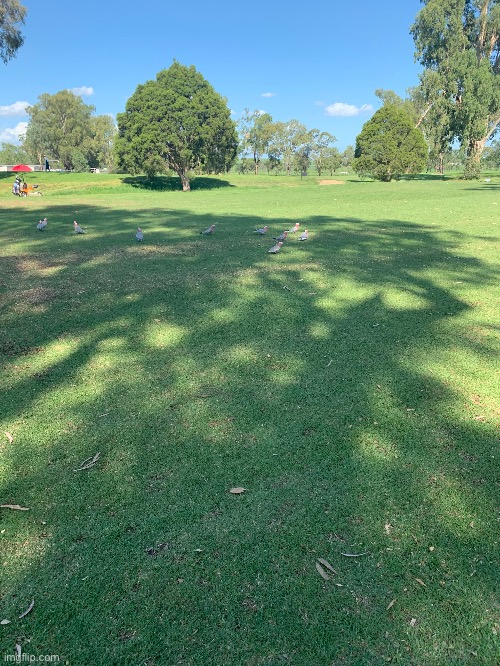

They put the cockatoos through a series of increasingly challenging trials to reach the boxes: first they had to climb a short ladder while carrying their tools then they had to fly horizontally with them and in the final test, they had to carry the tools while flying vertically.

Next, the team tested the cockatoos' ability to transport the tools as a set on an as-needed basis. The researchers found that when cockatoos did this switching, they performed better on the tests.Ī photograph of a cockatoo using the first tool (a sharp stick) to punch through a membrane. "When making the choice between which tool to use first, they were picking one up, releasing it, then picking up the other one, releasing it, returning to the first one, and so on," says Osuna-Mascaró. However, the birds engaged in an interesting behavior during this choosing phase. "The cockatoos had to act according to the problem sometimes the toolset was needed, and sometimes only one tool was enough," says Osuna-Mascaró.Īll of the cockatoos mastered the test in a very short period of time and were able to recognize when a single tool was sufficient. The cockatoos were given the same two tools, but they only needed the pointy stick when a membrane was in the way. To do this, they presented each cockatoo with two different types of box: one with a membrane and one without. Next, the team tested the cockatoos' ability to change their tool use in a flexible manner depending on the situation. The cockatoos don't have an equivalent foraging behavior in the wild, so there was no chance that their tool use was based on innate behaviors, and each cockatoo used a slightly different technique. Seven of the ten cockatoos tested taught themselves to extract cashews successfully by punching through the membrane, and two of the cockatoos (Figaro and Fini) completed the task within 35 seconds on their first attempt. They were provided with a short, pointy stick for punching holes and a vertically halved plastic straw for fishing. To reach the cashew, the cockatoos had to punch through the membrane and then "fish" the cashew out. To mimic the termite-fishing set-up, the researchers presented the cockatoos with a box containing a cashew behind a transparent paper membrane. In this study, Osuna-Mascaró's team tasked the cockatoos with fishing for cashews instead of termites. These chimpanzees fish for termites via a two-step process: first, they use a blunt stick to break holes in the termite mound, and then they insert a long, flexible probe to "fish" the termites out of the holes. Osuna-Mascaró was inspired by the termite-fishing Goualougo Triangle chimpanzees of northern Congo, the only other known non-human animal to use toolsets. "Their flexibility of behavior is stunning."Ī video of Figaro the Goffin's cockatoo using a toolset to fish for a cashew. "With this experiment we can say that, like chimpanzees, Goffin's cockatoos not only appear to be to using toolsets, but they know that they are using toolsets," says first author Antonio Osuna-Mascaró, an evolutionary biologist at the University of Veterinary Medicine Vienna.

Now, a team of researchers have used controlled experiments to clarify that the cockatoos do indeed recognize when a job requires more than one tool. Up until now, though, it wasn't clear whether the cockatoos considered these tools as a "set" it's possible that what may look like a toolset is instead nothing more than a chain of single tool uses, with the need for each new tool appearing to the animal as the task evolves. Captive Goffin's cockatoos use and manufacture tools, and a previous study of wild-caught cockatoos reported that they can use up to three different tools to extract seeds from a particular fruit. Goffin's cockatoos are small white parrots that hail from the Tanimbar Islands archipelago in Indonesia.


 0 kommentar(er)
0 kommentar(er)
